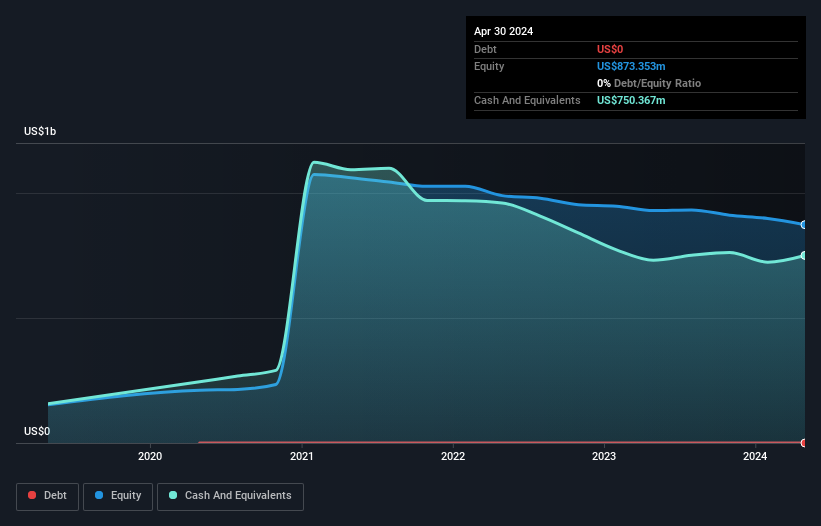Even when a business is losing money, it’s possible for shareholders to make money if they buy a good business at the right price. For example, although Amazon.com made losses for many years after listing, if you had bought and held the shares since 1999, you would have made a fortune. But while history lauds those rare successes, those that fail are often forgotten; who remembers Pets.com?
So should C3.ai (NYSE:AI) shareholders be worried about its cash burn? In this article, we define cash burn as its annual (negative) free cash flow, which is the amount of money a company spends each year to fund its growth. Let’s start with an examination of the business’ cash, relative to its cash burn.
View our latest analysis for C3.ai
How Long Is C3.ai’s Cash Runway?
A company’s cash runway is the amount of time it would take to burn through its cash reserves at its current cash burn rate. When C3.ai last reported its April 2024 balance sheet in June 2024, it had zero debt and cash worth US$750m. Looking at the last year, the company burnt through US$90m. Therefore, from April 2024 it had 8.3 years of cash runway. Notably, however, analysts think that C3.ai will break even (at a free cash flow level) before then. In that case, it may never reach the end of its cash runway. Depicted below, you can see how its cash holdings have changed over time.

debt-equity-history-analysis
How Well Is C3.ai Growing?
We reckon the fact that C3.ai managed to shrink its cash burn by 52% over the last year is rather encouraging. And operating revenue was up by 16% too. We think it is growing rather well, upon reflection. While the past is always worth studying, it is the future that matters most of all. For that reason, it makes a lot of sense to take a look at our analyst forecasts for the company.
How Hard Would It Be For C3.ai To Raise More Cash For Growth?
There’s no doubt C3.ai seems to be in a fairly good position, when it comes to managing its cash burn, but even if it’s only hypothetical, it’s always worth asking how easily it could raise more money to fund growth. Companies can raise capital through either debt or equity. Many companies end up issuing new shares to fund future growth. By looking at a company’s cash burn relative to its market capitalisation, we gain insight on how much shareholders would be diluted if the company needed to raise enough cash to cover another year’s cash burn.
Since it has a market capitalisation of US$3.7b, C3.ai’s US$90m in cash burn equates to about 2.4% of its market value. That means it could easily issue a few shares to fund more growth, and might well be in a position to borrow cheaply.
Story continues
How Risky Is C3.ai’s Cash Burn Situation?
As you can probably tell by now, we’re not too worried about C3.ai’s cash burn. For example, we think its cash runway suggests that the company is on a good path. And even though its revenue growth wasn’t quite as impressive, it was still a positive. One real positive is that analysts are forecasting that the company will reach breakeven. Taking all the factors in this report into account, we’re not at all worried about its cash burn, as the business appears well capitalized to spend as needs be. Taking an in-depth view of risks, we’ve identified 2 warning signs for C3.ai that you should be aware of before investing.
If you would prefer to check out another company with better fundamentals, then do not miss this free list of interesting companies, that have HIGH return on equity and low debt or this list of stocks which are all forecast to grow.
Have feedback on this article? Concerned about the content? Get in touch with us directly. Alternatively, email editorial-team (at) simplywallst.com.
This article by Simply Wall St is general in nature. We provide commentary based on historical data and analyst forecasts only using an unbiased methodology and our articles are not intended to be financial advice. It does not constitute a recommendation to buy or sell any stock, and does not take account of your objectives, or your financial situation. We aim to bring you long-term focused analysis driven by fundamental data. Note that our analysis may not factor in the latest price-sensitive company announcements or qualitative material. Simply Wall St has no position in any stocks mentioned.
Have feedback on this article? Concerned about the content? Get in touch with us directly. Alternatively, email editorial-team@simplywallst.com


